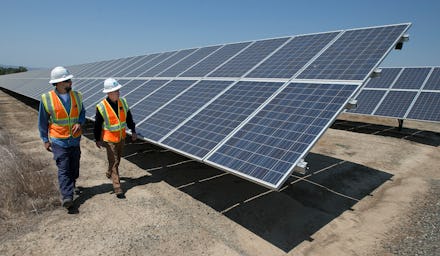Storing renewable energy costs way too much. This battery could change that.

We live in a world where renewable energy is an option, but the high cost of storing that electricity is still a problem. Now, researchers have invented a low-cost, “air-breathing” battery that could revolutionize access to clean energy and save our wallets.
The battery, which was developed by researchers at the Massachusetts Institute of Technology, allegedly costs just one-fifth of its already-existing equivalents.
Generally speaking, storing renewable energy is so expensive that a $100-per-kilowatt-hour rate is considered normal (a kilowatt hour is the amount of energy used in an hour while running a 1,000-watt appliance).
This battery, on the other hand, would cost just $20 to $30 per kilowatt hour for wind and solar energy in scaled-up systems, according to MIT News. Plus, a single battery charge has the potential to last for “days up to several months,” according to Yet-Ming Chiang, a professor of materials science and engineering at MIT.
“There’s a developing need, as we have more and more renewable energy, to store for longer periods of time than what’s currently possible,” he said by phone.
In an era of climate change woes, batteries are a key part of the clean energy equation. They fill in the gaps of electricity when, say, the sun is down for solar panels or the wind is too weak for turbines. This problem is usually referred to as “intermittency.”
“In New York, for example, the difference between the amount of sunlight you can turn into electricity in the summer versus that in winter is a factor of four — four times more [solar energy] in the summer,” Chiang said. “The expansion of renewable energy has to one way or another deal with its intermittency at some point.”
Scientists call it a “breathing battery” because it absorbs and releases oxygen, which basically sends electrons through a number of processes that both charge the battery and allow energy to be drawn from it. The batteries take up oxygen when their energy is being used, then release oxygen when charging again.
Currently still a prototype, it’s only roughly the size of a coffee cup — but if it’s made on larger scales, it’ll likely pack a lot of power.